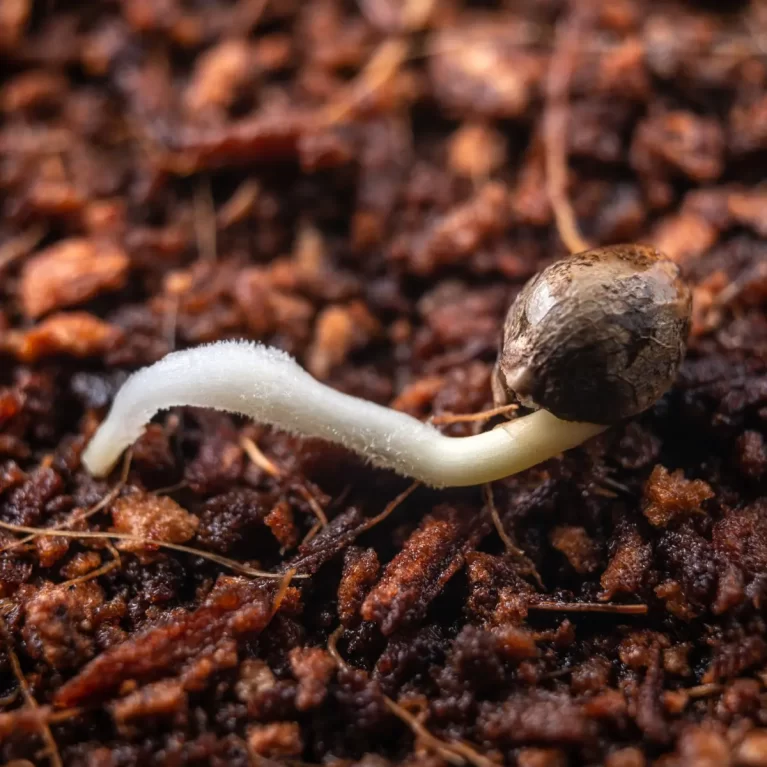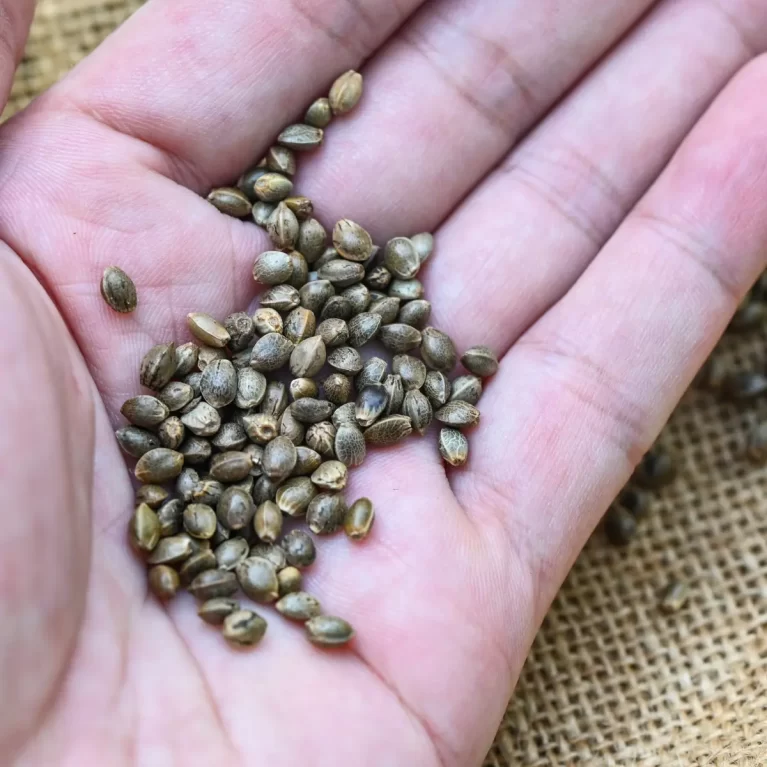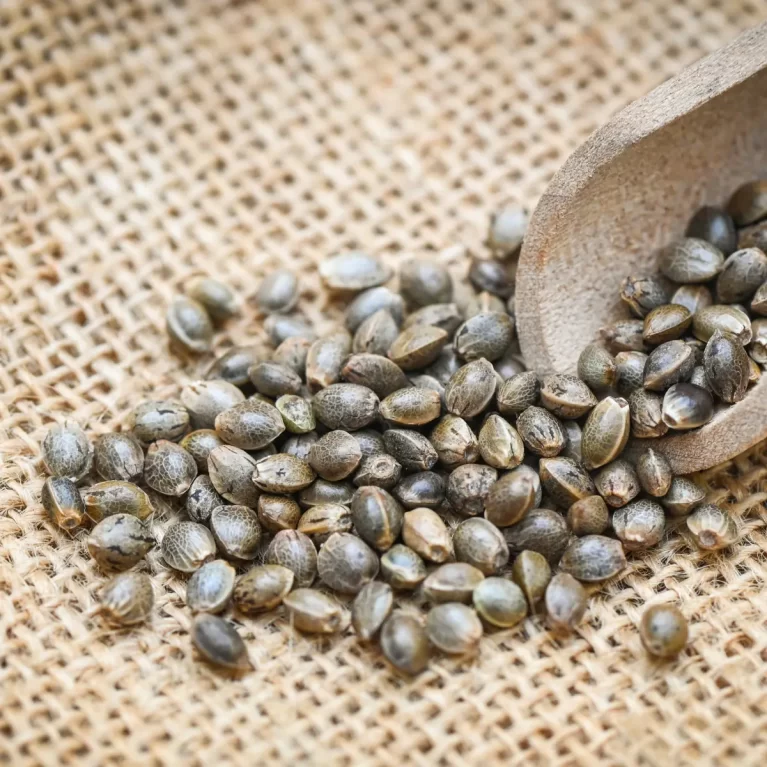How to germinate cannabis seeds starts with understanding the biological process where a seed develops into a plant. This initial phase in the life cycle of a cannabis plant is crucial, as the methods and conditions set here can significantly impact the growth and health of the plant. Germination occurs when the outer shell of a cannabis seed breaks open and the embryonic root, known as a taproot, starts to emerge. Successful germination depends heavily on environmental factors such as moisture, temperature, and light. This process usually begins in a controlled environment before the seeds are planted in soil or another growing medium.

The Paper Towel Method
Setting Up the Environment
To start germinating cannabis seeds using the paper towel method, you need a few simple household items: paper towels, two clean plates, and water. First, soak the paper towels in water, ensuring they are moist but not excessively wet. Wring out any excess water gently. Spread one of the moist paper towels on a plate. This method creates a nurturing, damp environment that is crucial for the seeds to break dormancy and begin sprouting. The setup should be kept in a warm area, ideally between 70-85°F (21-29°C), which aids in optimizing germination conditions.
Steps for Sprouting Seeds Using Paper Towels
Sprouting seeds using paper towels is a straightforward and efficient method for the best way to germinate cannabis seeds. Germinating cannabis seeds in soil mimics the natural conditions seeds would experience, providing a controlled, clean, and observable environment to start your seedlings. Here is a guide to each step in the process:
- Prepare Seeds: Start by laying out your cannabis seeds on a paper towel that has been thoroughly moistened with water. It’s crucial to space the seeds evenly, with each seed separated from its neighbors. This spacing is important because it prevents the seeds from competing for resources as they sprout. Each seed requires adequate room to expand and develop its initial root system, called a radicle. Overlapping can hinder this process, leading to poor germination rates and weaker seedlings. The moist environment of the paper towel encourages the seeds to begin the germination process by breaking down the protective seed coat.
- Create Environment: After arranging the seeds, cover them with another moist paper towel. This second towel ensures that the seeds remain hydrated and protected. Place a plate or similar flat object over the top to create a dark, dome-like environment. This setup is vital as it replicates the dark, moist conditions of the soil. The darkness helps trigger the biochemical processes inside the seeds that lead to growth, while the enclosed space maintains the necessary humidity to keep the towels damp and conducive for sprouting.
- Maintain Moisture: The success of this germination method largely depends on maintaining a consistently moist environment for the seeds. The paper towels should never dry out, as this can halt the germination process and potentially kill the embryo inside the seed. Check the moisture level of the paper towels at least once a day, adding water as needed to keep them sufficiently damp. Be cautious not to over-saturate, as excessive moisture can lead to issues like mold or fungus, which could damage or destroy the seeds.
- Monitor Growth: Regularly inspect your seeds for signs of sprouting, which typically occur within a few days to a week depending on the seed type and conditions. Look for the emergence of the radicle, which will appear as a small, white tip emerging from the seed. If conditions are optimal, you’ll see growth each day. Adjust the moisture levels based on your observations; for instance, if the towels are too wet, reduce the frequency or amount of added water. Once the seeds have visibly sprouted and the initial leaves (cotyledons) begin to emerge, they are ready to be transferred to a more traditional growing medium like soil.
This method of using paper towels for sprouting seeds provides an excellent way for beginners and experienced gardeners alike to kickstart their planting season. It allows for close observation and precise control over the germination environment, leading to higher success rates and healthier starts for your plants. Once you’ve mastered this technique, you can apply similar principles to other types of seeds to expand your gardening repertoire.
Monitoring Humidity and Temperature
The ideal humidity level for germination should be between 70-90%. You can use a simple humidity monitor to check these conditions. If the paper towels start to dry out, re-moisten them with a spray bottle to maintain the necessary humidity. Temperature fluctuations should be minimized, as they can affect the germination rate and health of the sprouting seeds. A steady temperature helps ensure a uniform and successful sprouting process.
Transitioning Sprouts to Soil
Once the seeds have sprouted and the tiny roots are visible, they are ready to be transferred to the soil. This stage is critical and should be handled with care to avoid damaging the delicate sprouts. Prepare small pots filled with a suitable seed starting mix, ensuring it is loose and well-aerated. Make a small hole in the soil, ideally using a pencil or your finger, and gently place the germinated cannabis seeds root down into the holes. Cover lightly with soil, and water gently, then place the pots in a location where they can receive gentle, indirect light. This marks the beginning of their growth phase, where they will need regular care and attention.
Direct Planting in Soil
Preparing the Soil for Planting Germinated Cannabis Seeds
When preparing to plant germinated cannabis seeds directly in the soil, the choice of soil and its preparation is fundamental. Opt for a light, nutrient-rich soil that allows for good drainage and aeration. Mix in some perlite or vermiculite to enhance the soil’s texture and water retention capabilities. It’s crucial to ensure the soil is loose to allow delicate roots to penetrate and establish easily without too much resistance. The pH of the soil should ideally be between 6.0 and 7.0, as cannabis seeds thrive in slightly acidic to neutral conditions. Testing your soil’s pH and adjusting it with amendments can greatly increase your germination success rate.
Depth and Spacing for Cannabis Seeds
To optimize the growth potential of your cannabis seeds, depth and spacing are critical factors. Seeds should be planted about a quarter-inch to a half-inch deep in the soil. This shallow placement helps the fragile sprouts break through the soil surface more easily. Space the seeds at least one inch apart from each other to avoid crowding and to provide ample space for root development. Proper spacing helps prevent the competition for nutrients and light as the plants grow.
Watering Techniques
Overwatering can lead to root rot, a common problem that can destroy young plants. Conversely, under-watering can stress the plants, stunting their growth or even killing them. The key is to observe the plants and adjust your watering practices to suit their needs as they develop through different growth stages. This careful monitoring and adjustment of watering techniques help in establishing a healthy root system that is crucial for the robust growth of cannabis plants.

Caring for Sprouts in Soil
After your cannabis seeds have sprouted, the young plants need careful nurturing to ensure healthy growth. Protect them from extreme temperatures and direct sunlight initially. Gradually acclimatize the sprouts to the outdoor environment if they are to be moved outside. During this early stage, keep the soil around the sprouts free of weeds and gently loosen the soil periodically to improve air penetration. Fertilization should be approached with caution; a mild, balanced nutrient solution can be applied sparingly to support growth without overwhelming the young plants. Regular observation for signs of pests and diseases is also crucial during this vulnerable phase of cannabis cultivation.
Water Immersion Technique
Preparing for Immersion
In germinating cannabis seeds in water, it’s essential to prepare the immersion environment correctly to enhance germination rates. Begin by filling a small, clean glass or jar with lukewarm water—aim for a temperature of about 65-75°F (18-24°C), which is ideal for cannabis seeds. The water should be purified or distilled to avoid any chlorine or contaminants that might inhibit seed germination. Change the water every 24 to 48 hours to maintain freshness and oxygen levels, which are crucial for encouraging the seeds to sprout.
Duration of Immersion for Maximum Germination
How long do cannabis seeds take to germinate? Usually, within this time frame, you should notice the seeds cracking open and tiny roots emerging. If seeds haven’t sprouted within 48 hours, they may either need more time, or they might not be viable. It’s important to monitor the seeds during immersion to ensure that they do not rot or become oversaturated, which can dramatically decrease germination success.
Signs of Ready-to-Plant Seeds
Identifying when cannabis seeds are ready to move from water to soil is a key step in the water immersion method. The main sign to look for is the emergence of a small white root from the seed, often referred to as a “taproot.” Once this root is visible and approximately a quarter-inch long, the seed is ready to be planted in the soil. Seeds that show this level of development are more likely to thrive when transferred, as the taproot is crucial for initial nutrient uptake from the soil.
Addressing Common Germination Issues
Overcoming Low Germination Rates
Low germination rates can be frustrating for growers eager to see their cannabis seeds sprout. To improve germination success, ensure your seeds are fresh and sourced from a reliable supplier. Old or improperly stored seeds often have significantly lower germination rates. Additionally, before planting, consider soaking your seeds in a mild hydrogen peroxide solution for a few hours to kill any potential pathogens and activate the seeds’ natural enzymes that trigger germination. This process should be followed by thorough rinsing under clean water to remove any residual peroxide.
Dealing with Mold and Fungus
Mold and fungus are common issues when attempting to germinate cannabis seeds, especially in environments that are overly humid and poorly ventilated. Here’s a guide on how to address these challenges:
- Maintain Proper Air Circulation: Ensuring adequate air movement around your germination setup is essential for preventing conditions that favor mold and fungal growth. Using a small fan can help maintain airflow, which reduces the accumulation of stagnant, moist air around the seeds. Proper circulation helps in evaporating excess moisture, keeping the environment around the seeds dry enough to discourage mold but still humid enough for seed germination. This balance is crucial as it helps maintain the ideal conditions for healthy seed development without promoting fungal growth.
- Sterilize Equipment: Starting with clean and sterilized equipment can greatly reduce the risk of introducing mold spores and fungal pathogens to your germination area. Sterilization involves cleaning all containers, tools, and even the surfaces where seeds will be placed. Use a solution of bleach diluted in water, or rubbing alcohol, to thoroughly wipe down all these items before use. To avoid contaminating fresh batches of seeds with mold spores or fungal residues from previously used or stored equipment, this procedure is essential.
- Use Antifungal Agents: In environments where mold is a persistent issue, employing antifungal agents can be an effective way to protect your seeds. Opt for natural fungicides like cinnamon or clove oil, which are gentler on the seeds and the environment than synthetic chemicals. These natural options can be mixed with water and lightly sprayed on the germination medium or applied directly to the paper towels used for sprouting. The antifungal properties of these agents help suppress the growth of mold and fungi without harming the delicate seeds.
Incorporating these strategies into your germination process helps create a more controlled and hygienic environment, increasing the likelihood of successfully sprouting healthy cannabis seeds. By understanding and managing the conditions that lead to mold and fungus, you can ensure better outcomes for your germination efforts, ultimately leading to stronger and healthier plants.
Advanced Tips and Best Practices
Selecting the Best Germination Method for Your Environment
Factors such as local climate, available space, and personal experience should guide your decision. For instance, the paper towel method might be preferable for growers who want to closely monitor seed progress and easily control environmental factors. In contrast, direct planting may be better for those looking to minimize transplant shock and who have consistent, favorable outdoor growing conditions. Assess your situation and select a method that aligns with your ability to control temperature, humidity, and light, ensuring the best start for your seeds.
Tools and Accessories
A reliable thermometer and hygrometer are essential for monitoring your growing environment. Heat mats can be crucial in cooler climates, providing the steady warmth that cannabis seeds need to germinate. Additionally, using a high-quality grow light can ensure your seedlings receive the spectrum of light necessary for robust development once they emerge from the soil. These tools help maintain the ideal conditions, making the germination process more efficient and less susceptible to error.

Timing Your Germination with Seasonal Changes
Initiating the germination process indoors during the late winter or early spring is ideal. This strategic timing ensures that seedlings develop strength and resilience in a controlled environment before facing unpredictable outdoor elements. This approach protects the young plants from late frosts, which can be detrimental to their growth. It also synchronizes their development cycle with the natural increase in daylight hours as the seasons change from spring to summer.
Successful germination of cannabis seeds rests on understanding and implementing proper techniques. From choosing the right method—be it the paper towel method, direct soil planting, or water immersion—to meticulously controlling environmental factors like humidity, temperature, and light, each step is crucial. The grower’s ability to adapt to their specific conditions and carefully monitor the germination process greatly influences the overall success rate and health of the cannabis plants. The journey of growing cannabis is one of constant learning and adaptation, aiming to optimize every step from seed to harvest.

